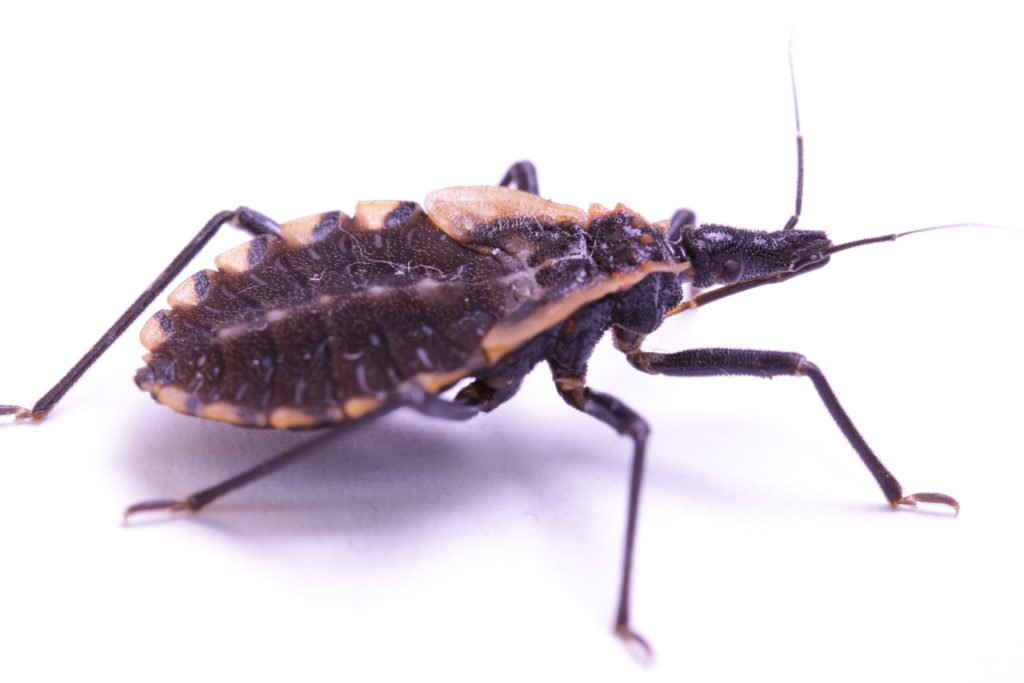February is normally a time of love and love. Nevertheless, this month the Texas A&M Veterinary Medical Diagnostic Lab, TVMDL, is advising pet dog owners that some kisses can be hazardous.

Chagas illness, spread out by a household of pests called “kissing bugs,” is a zoonotic illness triggered by infection with the protozoan parasite Trypanosoma cruzi
Carlos Rodriguez, TVMDL serology area head, stated T. cruzi can contaminate people and numerous types of domestic and wild animals. Veterinary medication has actually mostly concentrated on infections in canines due to their significance as buddy and working animals and the comparable methods infections manifest in people.
How Chagas illness spreads in people and canines
Kissing bugs are blood-feeding pests within the Reduviidae household. After feeding upon a contaminated animal, kissing bugs harbor the T. cruzi parasite in their digestion systems. Conclusive hosts, such as people and canines, are contaminated through direct exposure to the kissing bug’s feces.
Rodriguez stated kissing bugs get their name from their propensity to bite individuals around the face or mouth. After biting, the kissing bug will transfer feces into the injury, hence transferring T. cruzi. Although this is the most normal path of transmission in people, he stated canines are believed to get Chagas illness mostly from consuming a kissing bug contaminated with T. cruzi.
As soon as contaminated, canines might stay asymptomatic for months or years prior to visible medical indications appear, while some canines never ever establish medical indications. Of the canines that do establish indications, there are intense and persistent stages of the illness.
A lot of medical indications resemble that of cardiovascular disease. Less serious indications consist of sleepiness, anxiety and an absence of hunger, whereas more serious indications consist of trouble breathing and unexpected death.
The difficulties of identifying Chagas illness
Medical diagnosis of Chagas illness in canines can be difficult, Rodriguez stated. Presently, screening alternatives for living canines are restricted.
” There is no real ‘gold requirement’ test,” Rodriguez stated. “There actually isn’t a conclusive test that presently exists unless you can discover proof of the T. cruzi parasite itself, either flowing in the blood or by means of histopathologic findings in contaminated tissues.”
In living canines, serologic screening is the main approach of identifying Chagas illness. Serologic screening utilizes a canine’s serum to find antibodies versus T. cruzi. A favorable antibody titer suggests a canine has actually been exposed to, and likely contaminated with, the parasite. Nevertheless, there are restrictions with this approach of screening.
Rodriguez stated that cross-reactivity with Leishmania infantum, a carefully associated parasite, is understood to take place when screening for T. cruzi. Due to the fact that of this, Rodriguez suggests customers see outcomes within the context of the circumstance and think about medical indications, client history and chance for direct exposure to the parasite, specifically in locations where both organisms might be endemic.
Evaluating for Chagas illness at TVMDL
TVMDL tests for Chagas illness utilizing a serologic assay called an indirect fluorescent antibody, IFA, test. Every year, TVMDL carries out around 1,800 IFA tests for Chagas in canines, of which about 20% returned favorable for T. cruzi antibodies.
The IFA test is carried out on a glass microscopic lense slide separated into numerous areas, or wells. Each well includes eliminated T. cruzi organisms. After a canine’s serum is watered down, it’s contributed to its own well and the whole slide is bred. This procedure enables any antibodies versus T. cruzi present in the serum to bind to the parasites on the slide. After the preliminary incubation duration, a secondary fluorescent antibody is included, and the slide is bred once again. This 2nd round of incubation “tags” any of the pet dog’s antibodies left on the slide.
Following the 2nd round of incubation, the slide is seen under a fluorescent microscopic lense. Wells which contain antibodies versus T. cruzi will have organisms that radiance brilliant green. After assessment, the favorable samples are more watered down and checked to figure out the levels of T. cruzi antibodies present.
TVMDL suggests pet dog owners thinking about screening for Chagas illness initially consult their vet to eliminate other prospective medical diagnoses.
For more details on screening for Chagas illness, or other tests, see tvmdl.tamu.edu or call among TVMDL’s full-service labs in College Station or Canyon.
-30-













